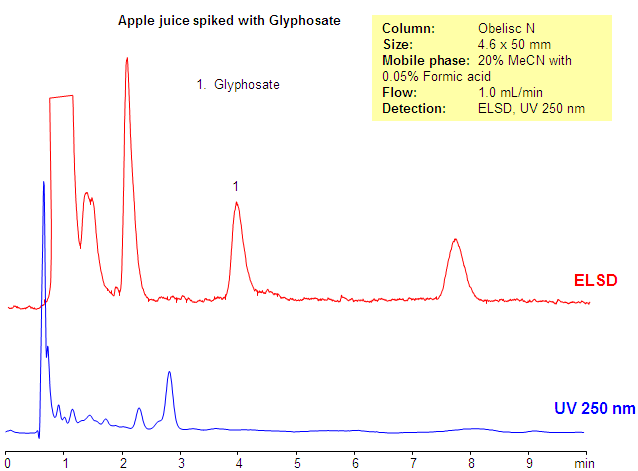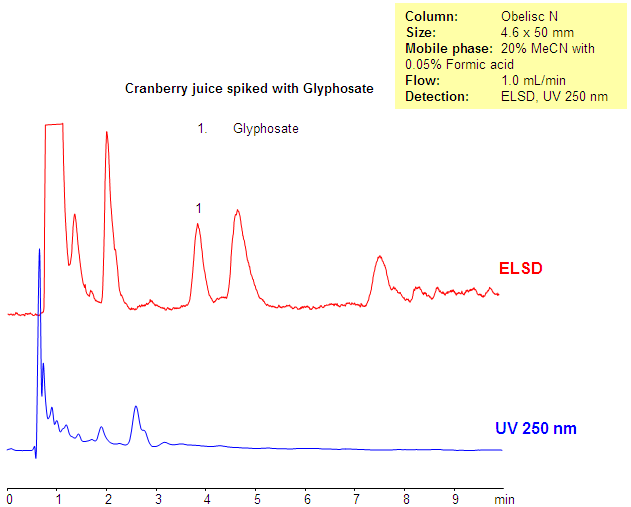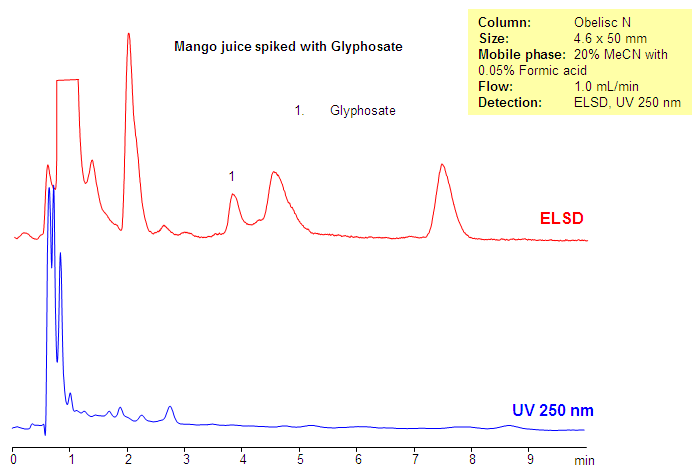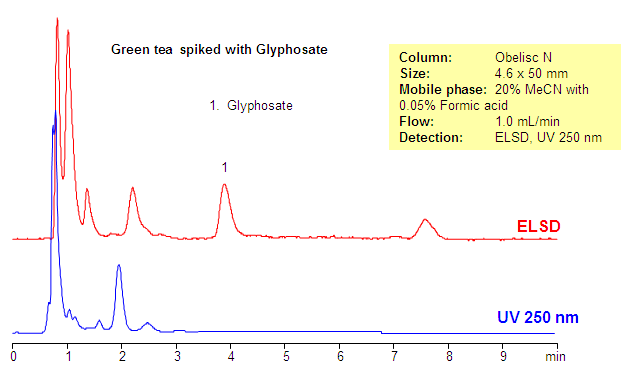



Glyphosate is a broad-spectrum herbicide which is used to kill weeds. Presence of glyphosate is strongly regulated by various governing agencies in the US, Europe, and Asia. Method for analysis of glyphosate in fruit juices and teas was developed using the Obelisc N HILIC/ion-exchange column. Glyphosate is retained by an ion-exchange mechanism. Since the method uses a highly aqueous mobile phase, which is not usual, for HILIC columns, none of the sugars, vitamins and other components of juices interfere with the analysis of glyphosate. Samples of juices were spiked with glyphosate. This method can be used in combination with LC/MS for determination of very low concentrations of glyphosate in various fruits and vegetables as well as ground and drinking water.
| Column | Obelisc N, 4.6×50 mm, 5 µm, 100A |
| Mobile Phase | MeCN/H2O – 20/80% |
| Buffer | Formic acid – 0.05% |
| Flow Rate | 1.0 ml/min |
| Detection | UV, 250 nm, ELSD |
| Class of Compounds |
Herbicide, Hydrophilic, Ionizable |
| Analyzing Compounds | Glyphosate |
Application Column
Obelisc N
SIELC has developed the Obelisc™ columns, which are mixed-mode and utilize Liquid Separation Cell technology (LiSC™). These cost-effective columns are the first of their kind to be commercially available and can replace multiple HPLC columns, including reversed-phase (RP), AQ-type reversed-phase, polar-embedded group RP columns, normal-phase, cation-exchange, anion-exchange, ion-exclusion, and HILIC (Hydrophilic Interaction Liquid Chromatography) columns. By controlling just three orthogonal method parameters - buffer concentration, buffer pH, and organic modifier concentration - users can adjust the column properties with pinpoint precision to separate complex mixtures.
Select optionsUV Detection





